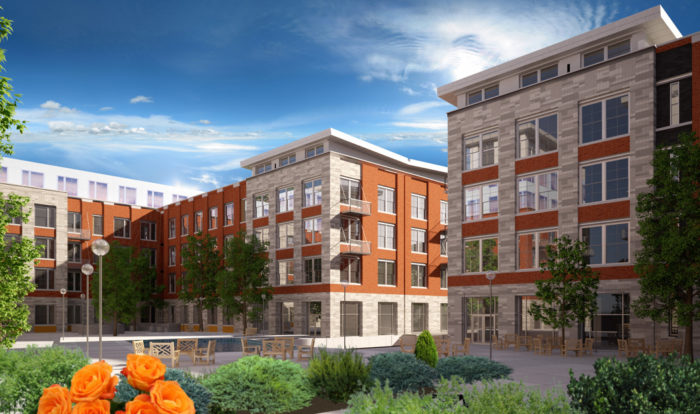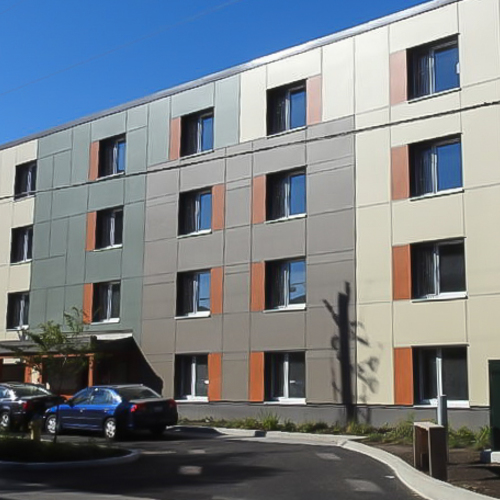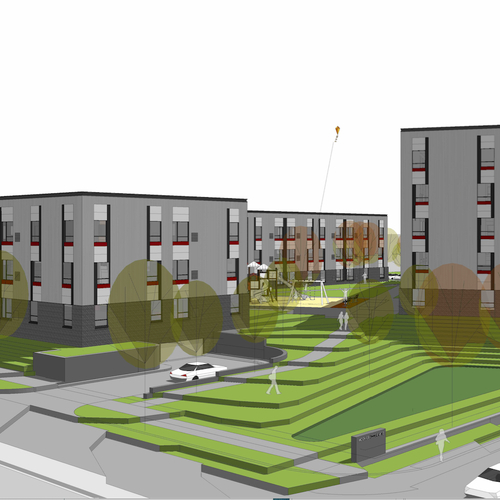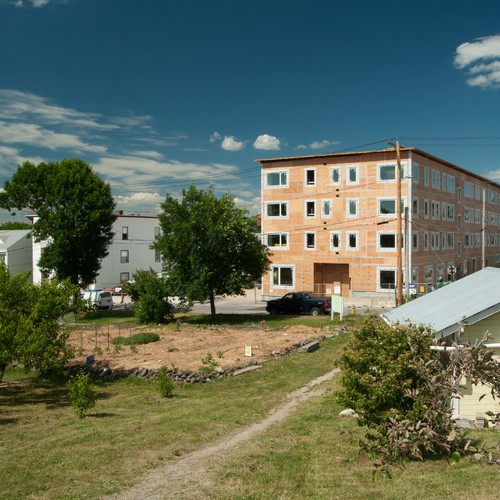
Image Credit: Arnold Development Group
Reporting growing interest in Passive House multifamily projects, the Passive House Institute U.S. (PHIUS) has launched an online resource center to help developers with design, financing, and construction details.
The PHIUS Multifamily Resource Center offers information tailored for developers, architects, engineers, policy makers, and investors who are considering projects that would meet requirements of the PHIUS+ 2015 building standard.
PHIUS says that the climate-specific standard, released last March, “ignited the tremendous growth of passive building from coast to coast, with the most significant gains occurring in the multifamily housing sector.”
Certified and pre-certified projects now total more than 1 million square feet and 1,200 housing units nationwide, PHIUS says. They include giants, such as the $60 million Second and Delaware project in Kansas City, Missouri, and the Orchards at Orenco in Hillsboro, Oregon, a three-phase project that ultimately will include some 150 units.
These and other projects are described in a case studies section that includes basic information on each project, including a list of team members and a summary of design strategies for the site, the building envelope, and the mechanical systems.
The website also offers builders a chance to request a feasibility study for their projects. The review would include preliminary energy modeling that would tell developers what steps they would have to take with the building envelope to meet the PHIUS+ standard.
PHIUS says that certified buildings use 60% to 85% less energy than a building that meets the 2009 International Energy Conservation Code, depending on the climate zone and building type. The cost premium over a standard Energy Star building has been reported by developers as between 0 and 3%.
“In fact, some developers even report a negative cost premium for passive building since the high-performance enclosure allows for the reduction in mechanical system size and equipment, thereby reducing both first costs and operational expenses for the life of the building,” PHIUS said in announcing the new website.
PHIUS Executive Director Katrin Klingenberg said that Passive House construction seems to have reached a “tipping point” where Passive House structures can be more cost-effective than conventional construction.
Weekly Newsletter
Get building science and energy efficiency advice, plus special offers, in your inbox.















0 Comments
Log in or create an account to post a comment.
Sign up Log in